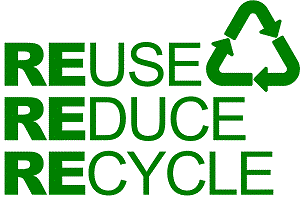Throughout each year DeziStyle points out the very best of what the world has to offer, but what do we offer the world in return?
This sentiment comes just a week before Thanksgiving, a time to express our gratitude for one another and the bounty that the earth has provided us. Unfortunately it also comes at a time when the planet is in desperate need of healing. There is much happening around the world that tends to exist just outside of our comfort zones, so today we shall address some of the ways that we can give back to mother nature and show respect to this giant living organism we call planet earth.
Whether you “believe” in climate change or not, the impact that humans have had on our environment is undeniable. As travelers, we are more aware of these circumstances and have either witnessed these changes firsthand or met people who have been at the receiving end of it. As travelers, we are part of a global community that has recognized the splendor and magnitude of what it means to humbly be a part of this fragile ecosystem. We as travelers have a duty to fulfill. We are the crusaders that must lead by example and relay this crucial information to others. It is simply not enough to explore and highlight only the best of what we see, as we would only being doing this planet a disservice to not also bring awareness to those uncomfortable things that people would (understandably) rather not address.
We are the crusaders that must lead by example and relay this crucial information to others.
Information is key and with that knowledge comes power — power to do something, to make a change, to be a voice. Its easy to feel helpless when there is so much work to be done but like everything else in life, taking one step at a time will eventually lead you to where you want to go. With that being said, here are some relatively easy ways to start contributing towards a more clean, sustainable planet in ways that are both realistic and beneficial to your overall health and happiness. It does not take much effort on an individual basis to make a significant change in the world, but each of us needs to be involved in order to bring about that positive shift. I know that I would never be able to look my (future) children in the face had I just sat back and watched the slow and steady disintegration of our little blue dot.
It’s important to understand what is happening and the direct effects these have on our ecosystem. Nothing here is new information. You’ve probably even scrolled past countless articles on Facebook that touch on the subjects of climate change, but the vast amount of information out there can be overwhelming, so the goal here is to share some simple steps on how to be more conscientious of mother nature and give back all year ’round, not just once a year. Here are some great rudimentary steps to take in the right direction.
How to start making positive changes:
Cut back/cut out animal products.
Well, if first is the worst, I might as well get this one out of the way. I know there will be plenty of people who will look at this and think “Ya right..not possible”. I myself am not a vegan or even a vegetarian, but over the past year I have completely eliminated dairy from my diet (yes, even my beloved cheese), and I have significantly cut back on meat. Hey, its a start. The cold, hard truth of the matter is that one of the MAJOR concerns with methane and CO2 pollution in our atmosphere is a direct affect of the cattle industry in particular – be it for milk, meat or leather, the amount of land, time and resources it takes to raise these animals are seriously detrimental to the stability of our planet and the toxic amounts of methane they produce has become a significant concern. Cattle is not the only burden, but contributes to the majority of the environmental issues regarding livestock. On average, livestock production uses one-third of the worlds fresh water and takes up 45% of earth’s total land. The two leading causes of rainforest destruction are livestock and feed crops. It’s not hard to see why this is such a matter of contention. Cutting out animals products is a big step, but it’s also an impactful one.
Reduce the amount of plastics you buy.
Plastic can take centuries to break down. Now, I know it would be nearly impossible to function in modern society without somehow interacting with plastic in your day to day, but you can make progressive decisions about how it plays a part in your life as a consumer. For starters, ditch the plastic bags (and even the paper ones) when you shop – Bring your own reusable bags and skip bagging your produce in individuals plastic bags. No more buying ziplocks or plastic tupperware for leftovers – opt for glassware like mason jars or store it in dish ware. Instead of buying packs of bottled waters, buy a reusable water bottle for each member of your family and encourage them to use that instead. Plus, filtering your own water will likely give you higher quality H2O than most bottled water brands, not to mention the possible health hazards you’re avoiding by not using plastic products that leach into your goods.
Be aware of products that contain palm oil.
Palm oil is the most popular vegetable oil in the world for its high yield and low labor costs. You can find palm oil (or one of the 25+ other names it goes by) in everything from food to detergents, shampoos and more. Although the product itself is not something to be shunned, approximately 85% of palm oil comes from Indonesia and Malaysia and is not sustainably farmed. This means there is a massive amount of large scale deforestation happening to make room for more palm oil production, resulting in the loss of habitat for orangoutangs, tigers, rhinos and other endangered species. Additionally, the burning of timber and forest undergrowth to make room for more palm oil plantations is a huge contributing factor to CO2 emissions, essentially making Indonesia the third largest contributor to greenhouse gasses in the world. Aside from not being particularly healthy, it’s just best to avoid products that contain it altogether.
Unplug electronics when they’re not in use.
We’ve all heard mom scold us at least once for not turning off the lights when we’re not using them. Surely I’m not the only one. However, we can save more energy and money by unplugging lights, appliances, and anything else that draws electricity when they’re not in use. This also includes turning off the air conditioner or heater when you’re not home as well. Even though an appliance may not be turned on, if its plugged in, it’s still using unnecessary power. Plugging devices in and out can seem time consuming, but there are a couple solutions I can offer to minimize the headache. The easiest and most cost effective way to go about this would be to use power strips. Not only does this give you access to additional outlets but you only need to unplug one cord for multiple devices. Another option is to purchase power strips that can shut off or turn on outlets using motion censors.
Get an eco-friendly vehicle or use alternative methods of transportation.
Unless you live somewhere like NYC, it would be pretty hard not to have a vehicle to get around with. Luckily, more brands are making the move into the eco-friendly arena and giving their buyers more of a selection when it comes to style and capacity. Simultaneously, there are a growing number of cities around the world that are expanding their green initiatives by creating designated bike traffic lanes and electric public transportation. As of 2017, my hubby and I are giving up both of our cars and will resort to using services like Uber or Lyft, public transport and good ole’ fashioned bicycles to get around.
Buy organic. Eat organically.
Not only is eating organically better for your body, its better for the environment. Non-organic produce is ridden with pesticides and other toxic chemicals and it’s estimated that about 90% of our country’s water is contaminated with at least one pesticide due to agricultural runoff. Support your local farmers by buying fresh produce (this also reduces the amount of CO2 emissions produced by only needing to transport food locally) or signing up for community supported agriculture – they’ll send you a weekly box of seasonal goodies. Better yet, grow your own!
Ditch the toxic household cleaners.
Your typical household cleaners are loaded with toxic chemicals that are harmful to the environment and your health. These ingredients have been linked to a myriad of health problems ranging from skin conditions to hormonal disruptions and even cancer. There are a bunch of eco-friendly cleaning products these days but if you don’t feel like buying them, it’s also easy to make your own using basic household ingredients like white vinegar, baking soda and essential oils. Search on Pinterest or Google for quick & organic “recipes”.
Buy recycled products.
No need for an explanation here. You can help the environment buy choosing brands that use recycled materials. Everything from shoes to toilet paper to bottles and more are available locally and online, just look for the labeling.
Switch your accounts to paperless billing.
It only takes a few clicks online to sign up for paperless billing. You’ll have less paperwork to file and you’ll save trees – easy!
Limit air travel when possible.
This is a big one for us travelers. Jet fuel releases a significant amount of CO2 and other pollutants in the air and every year the number of flights are increasing. When possible, try other methods of transportation like buses, trains or by boat. This can actually be a nice alternative that allows you to see more of the city, coastline or countryside – a huge benefit when traveling for leisure especially.
Offset your carbon footprint.
If you feel like you’d like to give back in a way that makes you feel a little less guilty about your carbon footprint, you can pay a fee based on your own calculations, using various websites. This levy would be put to use by helping a foundation of your choice to implement more climate change projects and awareness. Many progressive businesses are involved in this effort on a continuous basis to offset their own carbon footprints, but why not do it on an individual basis as well?
Of course there are many more ways to limit your carbon footprint, these steps are just the beginning but are impactful when you apply them. Anything you can do helps. Try implementing one by one or in incremental phases such as “Meatless Mondays” or refrain from using your vehicle on weekends in favor of bicycles, walking or public transportation/carpools.






1 Comment
ActorsEntertainment.com ® | Acting in Style – Dezi Style! How to give back to Mother Nature?
November 20, 2016 at 12:33[…] For the entire Dezi Style! please visit Dezi Style! […]